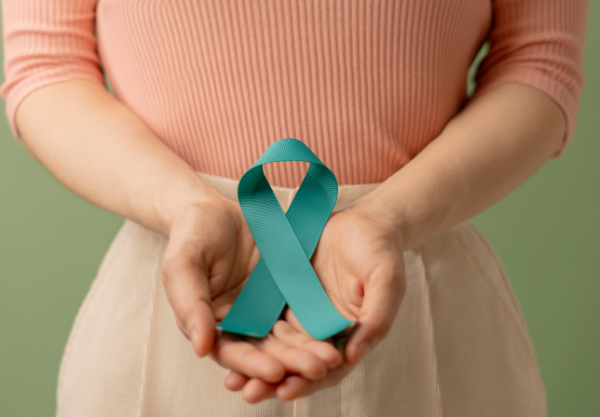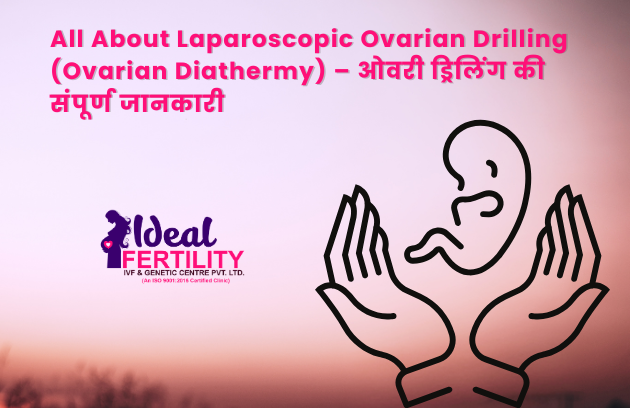Table of Contents
Laparoscopic ovarian drilling (लैप्रोस्कोपिक ओवरी ड्रिलिंग), also known as ovarian diathermy (ओवरी डायथर्मी), is a minimally invasive surgical treatment used for women diagnosed with Polycystic Ovary Syndrome who are struggling with ovulation problems and infertility. It is an option generally considered when medications like ovulation induction injections (ओवुलेशन इंडक्शन इंजेक्शन) fail to produce consistent results.
This article explores what the procedure involves, who may benefit from it and how it fits into the broader fertility treatment landscape in India.
Polycystic Ovary Syndrome and Infertility - पीसीओएस और प्रजनन समस्या का संबंध
PCOS is a hormonal disorder affecting many women of reproductive age. It can cause irregular periods, anovulation (no egg release), excess androgen levels and multiple small cysts in the ovaries.
Key symptoms:
- Irregular or absent periods.
- Weight gain or difficulty losing weight.
- Excess facial or body hair (हॉर्मोन असंतुलन).
- Acne and oily skin.
- Difficulty getting pregnant due to lack of ovulation.
While first-line treatment includes lifestyle changes and medications, some women do not respond to these methods. In such cases, laparoscopy for PCOS (पीसीओएस के लिए लैप्रोस्कोपी) may be recommended.

What is Laparoscopic Ovarian Drilling?
Purpose of the Procedure:
- Reduce the androgen levels in the ovary.
- Break the thick ovarian wall to support follicle development.
- Stimulate natural ovulation in women resistant to medication.
Who May Benefit from Laparoscopic Ovarian Drilling?
This treatment is best suited for women with:
- Clomiphene-resistant PCOS.
- Irregular cycles and high androgen levels.
- Normal body weight or moderate BMI.
- No severe tubal blockage or male-factor infertility.
Women considering this treatment should consult with a reproductive surgeon or gynecologist experienced in laparoscopic surgery for PCOS (पीसीओएस के लिए लैप्रोस्कोपिक सर्जरी).
Procedure Details: What to Expect Before, During and After Surgery?
Before the Procedure:
- Blood tests, pelvic ultrasound and hormone profiling.
- Consent and discussion about risks and alternatives.
- Short fasting period before anesthesia.
After Surgery:
- Patients may be discharged the same day or next.
- Mild pain, bloating or fatigue for 1-2 days.
- Recovery within a week.
- Ovulation may resume within 4-6 weeks.
During Surgery:
- Usually lasts 30-45 minutes.
- General anesthesia is used.
- A laparoscope is inserted and 4-10 punctures are made in each ovary.
Success Rates After Ovarian Drilling - ओवरी ड्रिलिंग के बाद सफलता की संभावना
Factors that improve success:
- Early intervention.
- Combined treatment with lifestyle changes.
- No other complicating infertility factors.
- Supportive follow-up care.
For many, this option avoids the need for repeated ovulation induction injections, which can be costly and have side effects.
Ovarian Drilling vs. Other Ovulation Induction Methods
Ovulation induction through medication is often the first choice. However, for those with resistant PCOS, drilling may be a long-term solution with fewer cycles needed.
| Method | Pros | Cons |
| Medications (Clomiphene) | Non-invasive, easy to use | Not effective in all women |
| Injections | Controlled cycles, used in IVF | Higher cost, multiple visits needed |
| Laparoscopic Drilling | One-time procedure, lasting effects | Requires surgery and anesthesia |
Ovarian Rejuvenation and Treatment Cost in India - भारत में ओवरी उपचार की लागत
The ovarian rejuvenation cost in India (भारत में ओवरी पुनरुद्धार लागत), which includes procedures like drilling or PRP therapy, may depend on various factors.
Additional Cost Considerations:
- Pre-operative investigations.
- Surgeon and hospital charges.
- Medications during recovery.
- Follow-up hormone therapy if needed.
Is Ovarian Drilling Safe? Risks and Complications
Like any surgery, this procedure comes with potential risks:
- Bleeding or infection.
- Adhesions (scar tissue formation).
- Damage to nearby organs (rare).
- Temporary or no improvement in ovulation.
However, in experienced hands, laparoscopic ovarian diathermy is considered safe with minimal complications.
Post-Surgical Care and Follow-Up
After recovery, patients may be advised:
- To try conceiving naturally for 3-6 months.
- Monitor ovulation via test kits or ultrasound.
- Lifestyle modifications to maintain hormonal balance.
- Begin other fertility treatments if needed.
Doctors may also recommend mild ovulation induction treatment (ओवुलेशन इंडक्शन ट्रीटमेंट) post-drilling if periods remain irregular.
Conclusion
Laparoscopic ovarian drilling (ओवरी ड्रिलिंग) can be a game-changing solution for women with PCOS who haven’t responded to medications. It’s a well-studied and effective way to restart natural ovulation and reduce dependence on hormonal drugs.
If you’re dealing with PCOS-related infertility, have already tried medications and are looking for a long-term solution, this minimally invasive treatment may be worth exploring. Speak to a fertility specialist to determine if this is the right option for your body and goals.

